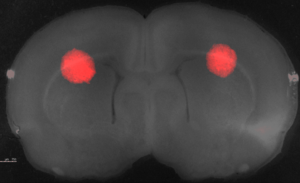A consortium effort to translate therapies for neurological diseases via an ex vivo organotypic platform
Disorders of the brain remain an enormous medical challenge. New platforms that allow functional testing in high-fidelity systems that incorporate patient tissue and high-throughput capacity are urgently needed to bridge gap between cell-based assays and whole-animal testing.
We have developed a multi-institutional effort to identify, develop and initiate translation of therapeutic neurological agents using the organotypic brain slice culture (OBSC) platform. Our OBSC models leverage existing cellular and extracellular milieu in the live brain slices to allow rapid, functional testing on brain tissue. Our multidisciplinary team, which spans three CTSA Program hubs (UNC-Chapel Hill, Duke University and the University of Florida), has developed multiple models for neurological disorders and shown the effectiveness of the OBSC platform to discover new mechanisms of disease and identify new therapeutic compounds.

We have developed technological innovations for OBSC modeling, including elevated-throughput techniques for brain slicing, viral- and biolistic-based transduction of disease-relevant genes, targeted gene knockdown, real-time monitoring using reporter assays and incorporation of fresh patient tissue.
We now seek to leverage the power of the OBSC platform and experience of our team to broaden the utility of the OBSC platform and ultimately improve the care for patients suffering from brain disorders. Our multi-institutional team will bring together and share new disease models, curated panels of therapeutic agents, unique molecular tool kits and clinical patient tissue. Within the areas of neurodegenerative disease, brain cancers and ischemic disease, we will add disease-relevant capabilities to the platform, screen therapeutic agents and enable new immune-based approaches, the fastest-growing area of clinical research, with a particular focus on the brain microenvironment.

Approaches to accomplish our aims are:
- We will use OBSC models of neurodegenerative disease to develop methods for tracking of cell signaling using real-time optical imaging, define molecular pathways mediating inflammatory drivers of disease and identify effective new therapeutic agents.
- We will use fresh patient biopsy samples and OBSC models of aggressive brain cancer to characterize the cellular and genomic heterogeneity of brain tumors, the efficacy of anti-cancer immune therapies and perform drug screens to identify new therapeutic agents.
- Lastly, we will utilize OBSC models of ischemic disease to develop methods for pooled molecular screening, investigate the impact of microglia on stroke progression and identify new compounds that reduce infarct size.
Together, our approaches will create an expandable infrastructure built around OBSC technology, accelerate the discovery of new and effective therapeutic strategies and initiate translation towards ultimate human patient trials to treat multiple disorders of the brain.
